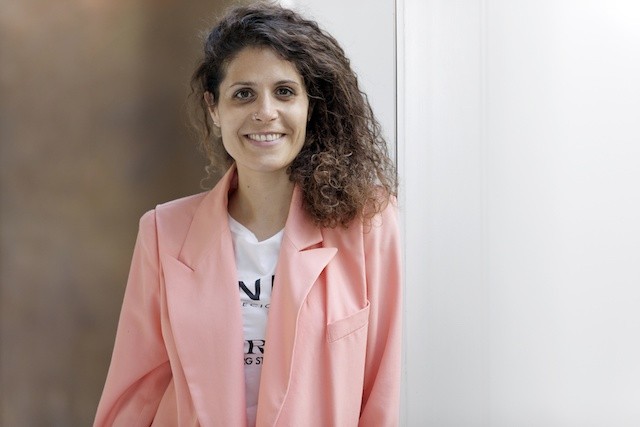CNRS bronze medal for Eleonora Di Nezza
 © Laurent Ardhuin pour le CNRS
© Laurent Ardhuin pour le CNRS
 © Laurent Ardhuin pour le CNRS
© Laurent Ardhuin pour le CNRS
At the beginning of her higher education studies in Italy, mathematics was like a game. "That's what made me want to continue, because the idea of making a profession out of it was quite far from my imagination at the start," says Eleonora Di Nezza, who has indeed become a mathematician and, since 2020, a Monge professor at École Polytechnique and a researcher at the Laurent Schwartz Mathematics Centre (CMLS*). The CNRS awarded her a Bronze Medal this year for her work on Kählerian geometry.
This field of mathematics is a branch of complex geometry, which studies complex varieties, i.e. objects which are the generalisation of surfaces such as the sphere or the torus, but in a space with a large number of dimensions. Kählerian varieties are a special case, introduced by the mathematician Erich Kähler in the 20th century. Eleonora Di Nezza discovered this field during her thesis, which she carried out under joint supervision between Rome and Toulouse with Stefano Trapani and Vincent Guedj, one of the specialists in this field, which is currently very popular in mathematics.
One of the aims of Eleonora Di Nezza's work is to understand the properties of these varieties. To do this, she reformulates geometric questions using the tools of another field of mathematics, analysis, i.e. in terms of equations. "Solving these equations with the tools of the so-called pluripotential theory provides information about geometry. This back and forth is fascinating.” These problems are part of pure mathematics, but there are also links with theoretical physics. For example, Calabi-Yau complex varieties are used in string theory to describe potential additional dimensions of space-time that are folded in on themselves.
After her thesis in 2014, she was a post-doctoral fellow at Imperial College London, the University of California at Berkeley and the Institut des hautes études scientifiques. In 2018, she became a lecturer in mathematics at Sorbonne Université. Her collaboration with mathematicians Tamas Darvas and Hoang Chinh Lu has led to important developments in pluripotential theory, answering questions that had previously remained open. "In this type of work, you know when you start, but not when you finish, nor if there even is a solution! Sometimes you feel a bit lost. Fortunately, there is always the game aspect, and sometimes the magic moment where you realize it works!”
>Find out more about Eleonora Di Nezza's work on the website of the CNRS National Institute for Mathematical Sciences and their Interactions
>Another bronze medal-winning researcher is Béatrice Cherrier, a historian of economics at the Center for Research in Economics and Statistics (CREST*)
*CMLS: a joint research unit CNRS, École Polytechnique - Institut Polytechnique de Paris
CREST: a joint research unit CNRS, École Polytechnique - Institut Polytechnique de Paris, ENSAE Paris - Institut Polytechnique de Paris, GENES
 Support l'X
Support l'X